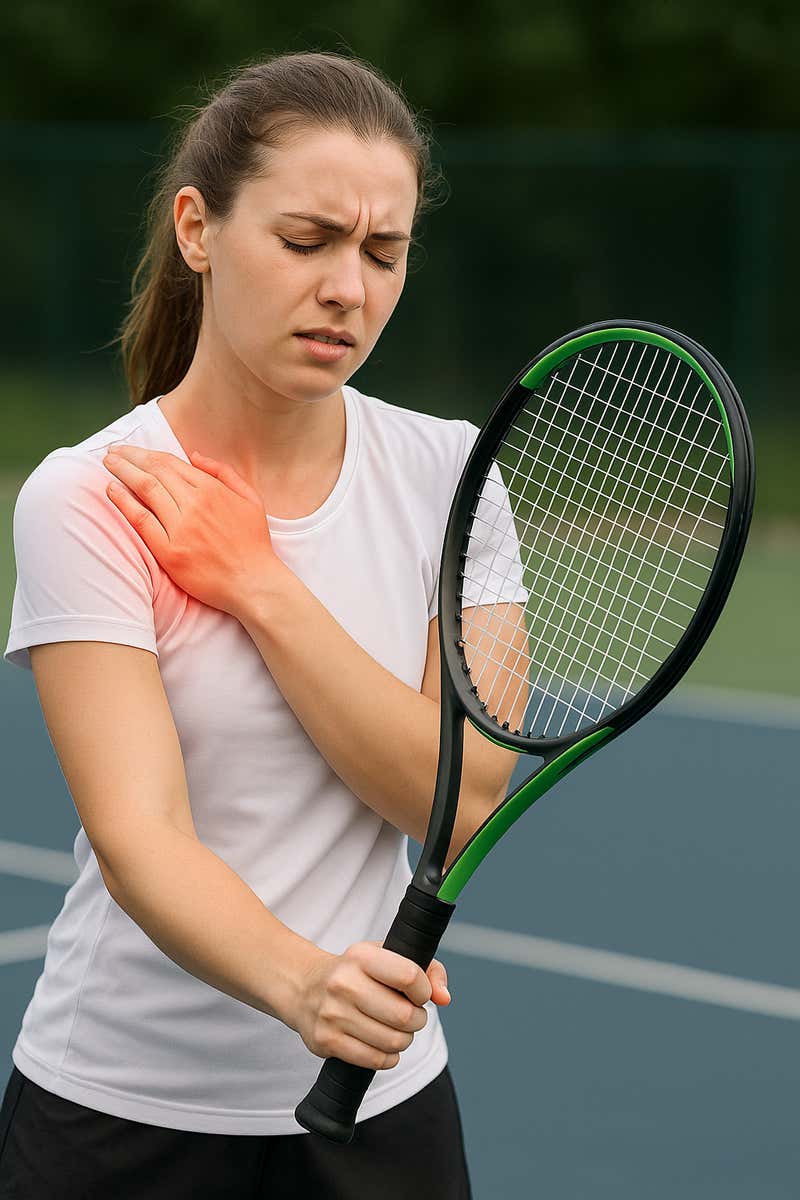
Best Tennis Racquets for Players with Shoulder Pain
Shoulder pain ranks among the most common musculoskeletal issues affecting tennis players, often stemming from repetitive serves, overheads, or improper technique. Finding a tennis racquet that alleviates strain can be a game changer for players seeking to prolong their career, maintain performance, and avoid injury. In this post, we’ll explore why shoulder‑friendly racquets matter, highlight key racquet characteristics to prioritize, recommend specific racquet models, and share best practices to prevent shoulder aggravation.
1. Why Shoulder Pain Happens in Tennis
Shoulder injuries like rotator cuff tendinopathy, impingement syndrome, and bursitis can manifest due to:
-
Repetitive high‑velocity motions: Overhead serves and smashes generate massive shoulder stress.
-
Poor technique: Failing to rotate the trunk or using a stiff arm increases strain.
-
Heavy or overly powerful racquets: Hard‑hitting frames transmit excessive vibration.
-
Sudden increases in training intensity: Jumping from casual play to intense practice can overuse the shoulder.
Statistics show up to 50% of adult and junior tennis players report some shoulder discomfort each year. That’s why selecting the right racquet plays a crucial role in prevention and rehabilitation.
2. Key Racquet Characteristics That Help with Shoulder Pain
a) Weight & Balance
-
Ultra-light or lightweight racquets (260–300 g unstrung) reduce inertia and joint torque.
-
Head-light balance shifts weight toward the handle, easing shoulder load.
b) Stiffness (RA Rating)
A moderate stiffness rating (RA 60–69) absorbs more shock, unlike high-stiff (£≥70). Look for models around RA 62–67.
c) Vibration Dampening
Built-in features like dampening grommets or vibration‑absorbing Au fibers help mute shock. Consider adding a soft overgrip and dampener.
d) Head Size & String Pattern
-
Larger head sizes (100–105 in²) provide a forgiving sweet spot, reducing mishits.
-
Open string patterns (16x19) can boost power with less effort—but ensure control isn’t compromised.
e) Grip & Ergonomics
Proper grip sizing and a cushioned or ergonomic handle minimize wrist and forearm compensation which can trigger shoulder strain.
3. Top Recommended Racquets for Shoulder Pain
Here are expert‑curated picks combining comfort, performance, and shock reduction:
a) Babolat Pure Aero Team (2024 Version)
-
Weight: 275 g unstrung; Balance: 32 cm (HL)
-
Key Features: FSI Power string design, Cortex Pure Feel dampening, open 16x19 pattern
-
Why: Lightweight and vibration‑absorbing, keeps spin power without shoulder shock
b) HEAD Graphene 360+ Gravity S Lite
-
Weight: 275 g
-
RA: ~62
-
Why: Soft feel, good stability, and shock control—great for players transitioning from heavier frames
c) Wilson Clash 100UL
-
Weight: 260 g
-
Flexpoint™ and FreeFlex technologies offer exceptional flexibility
-
Why: Ultra‑flexible frame absorbs impact—ideal for sensitive shoulders
d) Yonex EZONE 100L
-
Weight: 265 g
-
Features: Isometric head shape, Vibration Dampening Mesh
-
Why: Creates sizable sweet spot; reduces impact stress on shots
e) Prince Phantom 100X
-
Weight: 285 g
-
Flex: Very flexy w/ EXO3 grommets
-
Why: Damp feel, arm-friendly, with added control for players who overspin
4. Preventive Tips, Technique, Warm‑up & Maintenance
a) Perfect Your Technique
-
Prioritize shoulder rotation rather than excessive arm extension.
-
Learn biomechanically sound serve and overhead mechanics (e.g., trophy pose, leg drive).
-
Use video analysis to diagnose flaws.
b) Warmup & Mobility Drills
-
Start with active shoulder warm‑ups—band pull‑aparts, internal/external rotation.
-
Include ripe band or resistance band drills to activate scapular stabilizers.
c) Strength & Conditioning
-
Focus on rotator cuff strengthening: external/internal rotation, prone Ys.
-
Include scapular muscles: rows, lat pulldowns, face pulls.
-
Core and lower‑body power help produce force, reducing shoulder load.
d) Manage Training Load
-
Steer clear of sudden practice spikes—adhere to a 10–20% progressive load limit.
-
Incorporate rest days and cross‑training (yoga, swimming) to allow recovery.
e) Equipment Checks
-
Re‑string before losing tension (roughly every 40–60 hours of play).
-
Use low‑vibration or multifilament strings—they’re gentler than stiff polyester.
-
Refresh grips; damp overgrips absorb sweat and soften feel.
f) Pro Level Tips
-
Add aftermarket shock‑absorbent dampeners (e.g., Wilson FeelFlex).
-
Try custom lead tape (1–3 g) near throat to fine‑tune balance and reduce torque.
5. How to Choose the Right Racquet for Your Needs
| Player Profile | Preferred Weight | Balance | String Pattern | Stiffness | Features |
|---|---|---|---|---|---|
| Mobile baseliner | 260–290 g | Head-light | 16x19 | RA 62–66 | Dampening tech |
| Serve-and-volley player | 270–300 g | Even | 18x20 | RA 63–68 | Stability focus |
| Power hitter transitioning to low-shock | 275–300 g | even slightly HL | 16x19 or 16x18 | RA 62–65 | Damp and flex |
| Recreational/social player | 260–275 g | HL | 16x19 | RA ≤ 65 | Large sweet spot |
Steps to choose: demo the leading 2–3 racquets, compare feel & arm comfort, check serve/groundstroke comfort, and evaluate post-play soreness.
7. Bonus Section: Shoulder‑Friendly String & Grip Setups
-
Strings:
-
Multifilament: Tecnifibre NRG2, Babolat Xcel, Wilson NXT
-
Hybrid: Polyester mains + softer poly/warm gut crosses
-
-
Grips:
-
Overgrips: Wilson Cushion, Yonex Super Grap
-
Shock absorber: Rubber-style or composite inserts (e.g. Gamma X)
-
Conclusion
The best tennis racquet for players with shoulder pain delivers a synthesis of lightweight design, moderate flex, vibration dampening, and ergonomic balance. Rankd picks: Babolat Pure Aero Team, Wilson Clash 100UL, HEAD Gravity S Lite, Yonex EZONE 100L, and Prince Phantom 100X—balance performance with arm comfort. Pair the right racquet with proper technique, warm-up, and load management to keep your shoulder pain-free and performance high.
